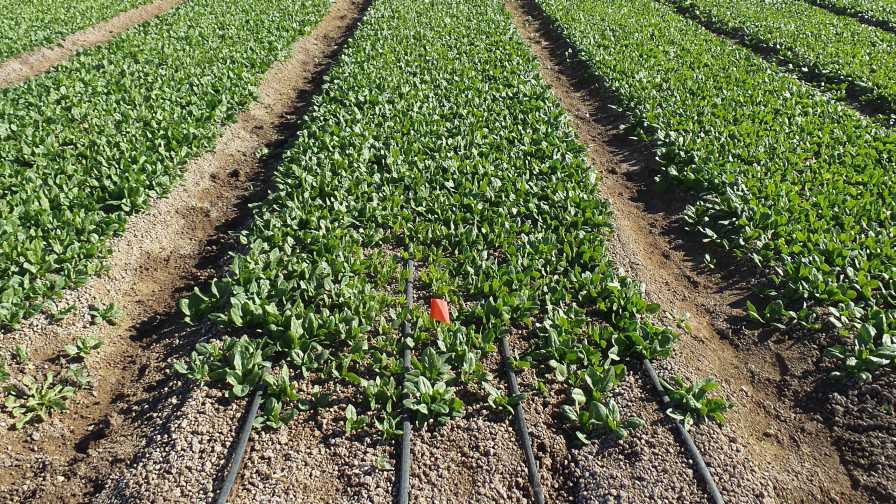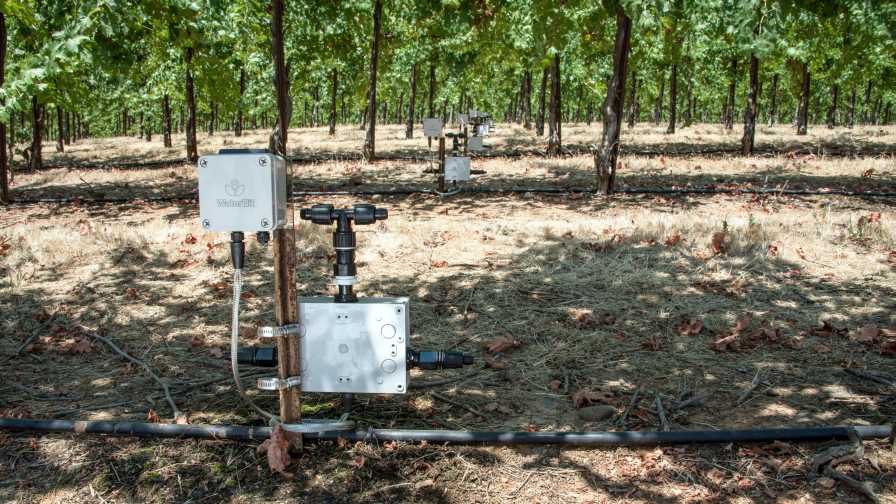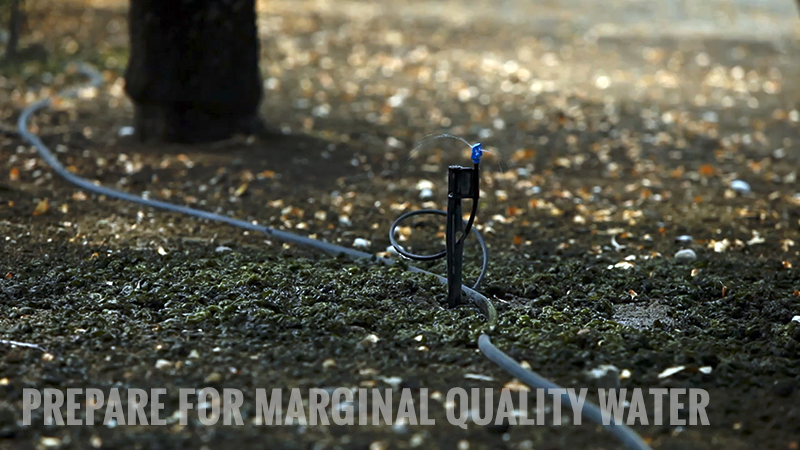Will Drip Replace Overhead Irrigation in Farm Fields?

University of California-Riverside researcher Ali Montazar is doing research on switching over organic spinach fields from sprinkler to drip irrigation. Photo by Aliashar Montazar
All growers want to use less irrigation. It not only saves money, but it saves hard-to-find labor hours. But making the switch to more sustainable methods like drip and automation strike many growers as risky.
That’s where researchers step in.
Dr. Aliashgar ‘Ali’ Montazar, a University of California, Riverside researcher, heads up irrigation and water management in Imperial and Riverside counties for the University of California Cooperative Extension system. He has been studying how drip irrigation works in a crop that is grown mostly with overhead irrigation.
He’s kicking the tires for growers so they can decide if drip is the way to go even in crops that traditionally haven’t had drip. And he’s finding it has benefits beyond conserving water.
Drip Shows Promise in Reducing Disease
Montazar’s latest research has focused on the 10,000-plus acres of certified organic spinach grown throughout California’s picturesque Imperial Valley. The research has been conducted over the past two years.
There is a belief among growers in the area that ongoing issues with downy mildew in the crop is at least partially caused by the amount of moisture that sprinklers can leave dotting the canopy.
“Being certified organic, there is really nothing they can use as fungicide; so it is a big problem,” Montazar says. “So, we said ‘Let’s try drip (irrigation) in spinach.’”
Montazar has had success placing field trials on three farms in the area. He characterizes the results thus far as “very promising, albeit still early stage.”
Specifically, he has been able to analyze enough field data from the plots to directly correlate a four- to five-times reduction in downy mildew disease proliferation when moving to drip tape.
“Another grower reported being able to control downy mildew disease exclusively through the drip irrigation,” Montazar recalls.
That grower, who had previously grown spinach in both a conventional system with sprinkler irrigation, as well as a portion under drip, is saving upwards of $300 per acre by getting off the water treatment chemical treadmill with his organic crops.
“The other thing to note is there is a nice savings on energy [with drip] as well,” Montazar adds. “Another grower reported he saved $200 an acre on energy savings from getting off the sprinklers. Because with drip, there is less pressure needed, so it consumes less energy (pumping water).”
Some Drawbacks with Drip
It bears noting, though, that notall is perfect with the sprinkler-to-drip-switch.
Some of Montazar’s growers have run into what you could call water logistics problems. A lot of them don’t have the ideal on-farm reservoirs to efficiently pump water into the drip lines. And that reduces the amount of money a grower in that scenario can save.
Additionally, soil salinity issues have occasionally popped up.
The researcher believes evapotranspiration rates tend to push even higher when using drip, meaning the plants will drink in as much water as quickly as possible during irrigation events, while leaving some of the fertilizer salts that travel in the drip lines behind in the soil.
“That is only a technical issue in my opinion,” he explains. “Some of those growers, we’ll recommend that they ‘leach’ the field at the end of the season to remove that leftover salt content. The good thing is vegetables are a cold-season crop here, so it’s not a huge issue. With smart management, it’s something we can resolve.”
In summing up his promising research, Montazar cautions that at least one more season of data is required before any final conclusions can be locked in.
Irrigation Automation Connects with Growers
There are really four main players driving irrigation innovation in California’s specialty crops: growers, university Extension researchers, farmer-facing ag service providers and Pest Control Advisers, and, of course, the Silicon Valley ag tech community.
Founded during the last great drought back in 2016 and based south of the Greater Bay Area in San Jose, CA, WaterBit is one of many Silicon Valley tech startups looking to help growers adopt tech to right size water usage.
As to WaterBit specifically, the company’s networked soil moisture sensors and probes, and other field-deployed data loggers, integrate with its data processing and visualization digital tools. That allows farmers to precisely monitor and control irrigation systems from anywhere with an internet connection.

WaterBit specializes in deploying sensors and soil moisture probes in farm fields. They help farmers capture the necessary data to make informed irrigation strategy decisions. Photo courtesy of WaterBit
The company’s COO, Leif Chastaine, says he has seen interest in automation spike over the past two years.
“This is sort of the direction that we always thought ag tech would go. But like everything in farming, there’s challenges bringing new technology into these environments,” Chastaine explains, also one of the outfit’s cofounders.
Ag tech companies that call on farmers can find the sheer diversity of specialty crops a challenge. It has created a sharp learning curve for them.
But Chastaine says if tech companies focus on the most practical and efficient methods, that builds trust.
“We’re having a lot of these conversations [with farmers], where they have these long-established practices, and now the data is saying that maybe they should do it differently,” Chastaine says.
Doing it differently in irrigation usually means going from a set watering schedule to more of an interval-based approach, according to Chastaine.
Is Artificial Intelligence the New Frontier?
Artificial intelligence (AI) is everywhere in today’s data-centric, sensor-filled, connected world. Irrigation tech is no different in that regard.
Israeli startup Prospera Technologies offers data-powered agronomy and its machine vision capabilities to farmers through a partnership with Valmont Industries.
“Finding the perfect irrigation recipe is hard. There are just too many parameters that are different and that are continuously changing,” says Prospera CEO Daniel Koppel.
Among those constantly changing and evolving production variables, Koppel lists data layers. Like soil type, climate/weather, genetics planted, and plant stress. These are some of the more important factors farmers must manage to set irrigation parameters.
“I think that now, with new sensing capabilities, complemented with Artificial Intelligence, technology is proving to substantially help with this critical task,” Koppel says.
Asked specifically where its growers are finding success, Koppel says most have been able to reduce irrigation usage by about 20%. It’s not just the price of labor that makes this type of tech attractive for growers, he says. It’s also the rising cost of ag inputs.











